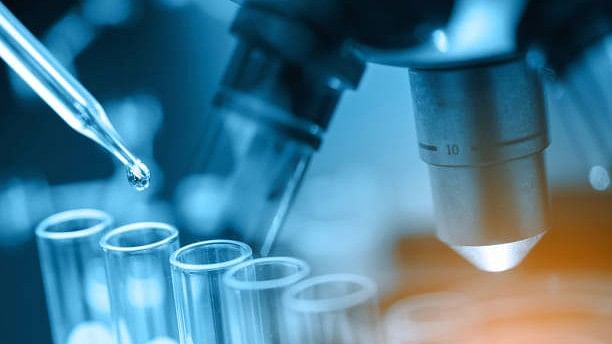
Image for representation.
Credit: iStock Photo
Bengaluru: City researchers have achieved a breakthrough in controlling the assembly of tiny molecular units into complex structures, with implications that could potentially “revolutionise” industries such as electronics and healthcare.
The study, conducted by scientists at the Centre for Nano and Soft Matter Sciences (CeNS) and Jawaharlal Nehru Centre for Advanced Scientific Research (JNCASR), focuses on the supramolecular self-assembly process, where small molecules spontaneously organise into larger, well-defined structures without external guidance.
Mastery of this process is essential for creating innovative organic materials that can be used to develop nanodevices, tiny machines capable of performing precise tasks at the molecular level.
The researchers specifically examined the self-assembly behaviour of chiral molecules — molecules with structures such that their mirror images are not identical, resulting in distinct properties.
"We studied this material in both water solution and at the air-water interface. By placing the material on the surface of water, we observed how it behaves. These molecules exhibited unique optical properties in solution, which could be used to create sensors. The nano-bio interactions, akin to a ‘lock-and-key’ system, highlight that only specific materials will effectively interact with biological systems, which is crucial for targeted drug delivery,” explained lead researcher Goutam Ghosh from CeNS.
At the air-water interface, these materials formed two-dimensional nanostructures highly suitable for carrying drugs, Ghosh added. He further mentioned that future work would explore the piezoelectric properties of these molecules, which allow them to convert mechanical force into electrical energy or vice versa. This property could enable biocompatible or wearable devices to generate current from movements such as walking, potentially offering applications in heart rate monitoring.
Meanwhile, another CeNS team, led by Subash C K, has developed a nanomaterial with piezoelectric properties that can be used for pressure sensing and energy harvesting. This material has also led to a prototype road safety sensor, for which a patent has been filed. The sensor can detect an approaching car on a moveable ramp placed 100 metres before a high-risk turning point, alerting motorists with a warning display.